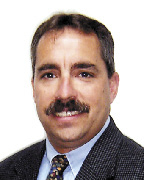Much has been written about the benefits of sustainable or "green" construction. No matter which side of the global warming debate you come down on you can't argue that buildings that require fewer natural resources to construct and consume less energy to operate make sense in today's world. Still, the first question we hear from a potential client looking at a "green" or high performance building is "how much more will it cost?" We can do all of the cost/benefit and life cycle analysis in the world, but if you can't afford the first dollar cost of a project it's not likely to get built.
If you Google "cost of green construction" you will be presented with hundreds of papers all reporting green construction to be only 1-2% higher; some say it is no more costly. The question that is never asked or answered, however, is "higher than what?" If you're comparing a LEED certified facility to a code minimum building with the lowest cost mechanical and electrical systems, the difference will be substantially greater than the oft quoted 1-2%. Unfortunately, in today's market, that less expensive code minimum building leases and finances on nearly the same terms as the more expensive higher performing building. The problem with most of these studies is that they make no distinction between building types and sizes. The smaller the building, the more financially difficult it becomes to build a LEED certified building that can compete in the marketplace.
Does that mean a code minimum, low performance building is what you should be constructing? Of course not! The benefits of a high performance building can't be judged on initial cost alone. It's important to consider the potential savings high performance construction provides. Lower energy costs (up to 30% compared to code minimum buildings) reduce the building's operating expense, raising the net income and, theoretically at least, the asset valuation. As tenants become more knowledgeable about, and begin demanding, high performance buildings your code minimum facility will be quickly outclassed in the marketplace. Unfortunately, we also know that the usual sources of capital do not necessarily place the appropriate valuation on "green" features that make buildings more hospitable to their environment and the people inside.
The challenge we see is in educating owners, financiers and users of real estate about the long term benefits of designing and constructing a higher performing building. Until such time as high performance buildings are afforded the higher asset and lease valuations they deserve, designing, financing and leasing a green building will be a challenge. On the build side, contractors, subcontractors and vendors need to get comfortable with the challenges of building green. We have seen evidence of a "fear factor" priced into projects demanding high performance materials and systems. This will change with time and experience.
So what do you do until the market catches up with the green building trend? At Fulcrum Associates, we have taken a practical approach to the green construction frenzy. While the United States Green Building Council (USGBC) requirements for a LEED certified building are all excellent, worthwhile improvements on the design and construction process, some are difficult to justify on a cost/benefit basis. We start with that previously mentioned code minimum building and perform an analysis of every envelope and system upgrade, evaluating the initial cost premium and offsetting it with savings realized through increased efficiency. You will end up spending more than 1-2% initially, but with a financial payback measured in years, not decades.
This approach is sometimes referred to as LEED Lite (apologies to the USGBC and the Miller Brewing Company). It is a way to gain most of the occupant comfort and operating efficiencies of a LEED certified green building without pricing yourself out of the market.
As construction professionals, we know that green design has financial advantages. If you have looked at a LEED or otherwise green project and been scared away by the cost, let us show you how to ease into this new world of development without breaking the bank!
Bill Jean is director of dusiness Development Fulcrum Associates Inc, Amherst N.H.
Tags:
First question we hear from potential clients looking for a green building is "how much more will it cost?"
July 23, 2008 - Green Buildings







